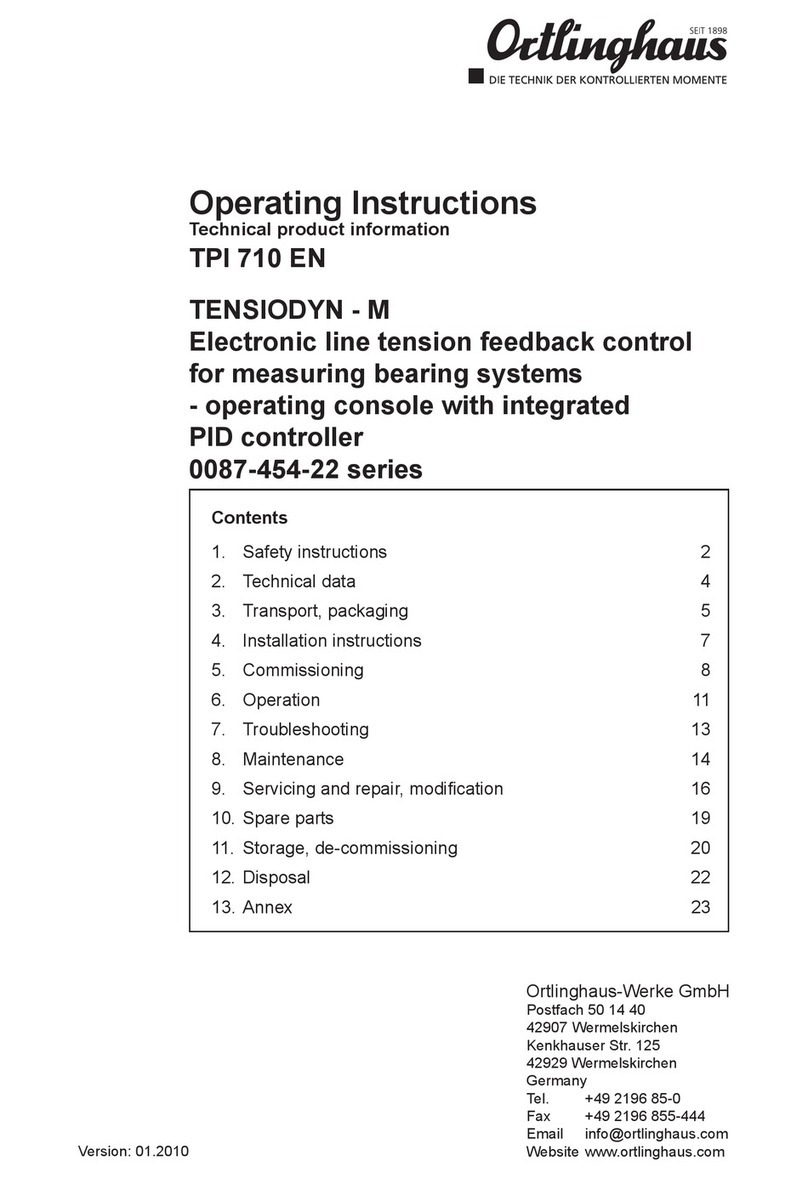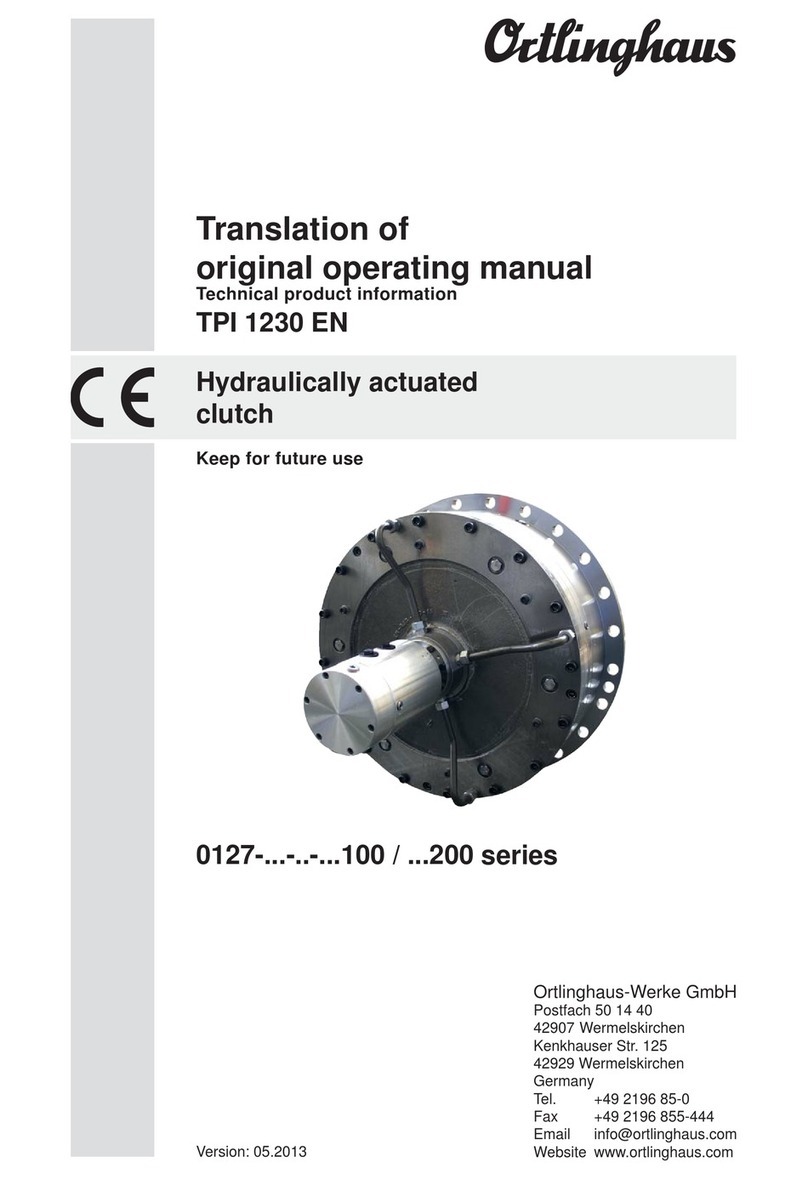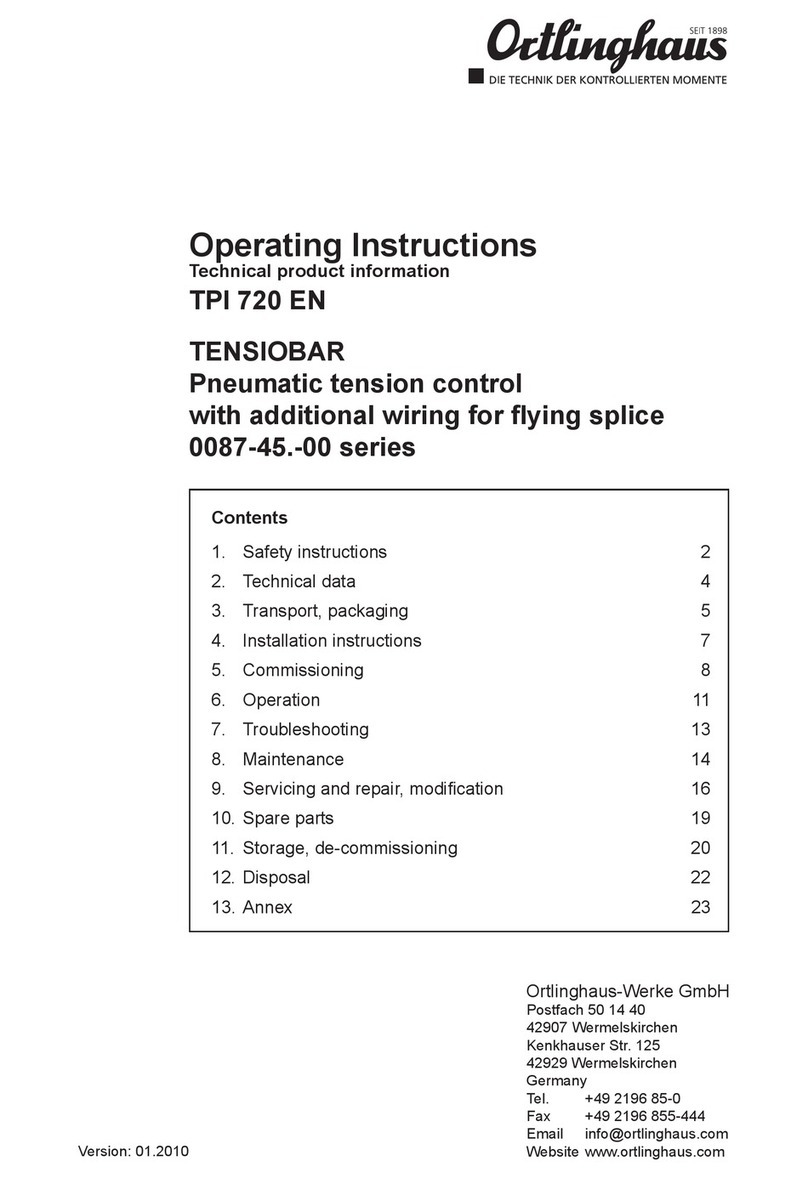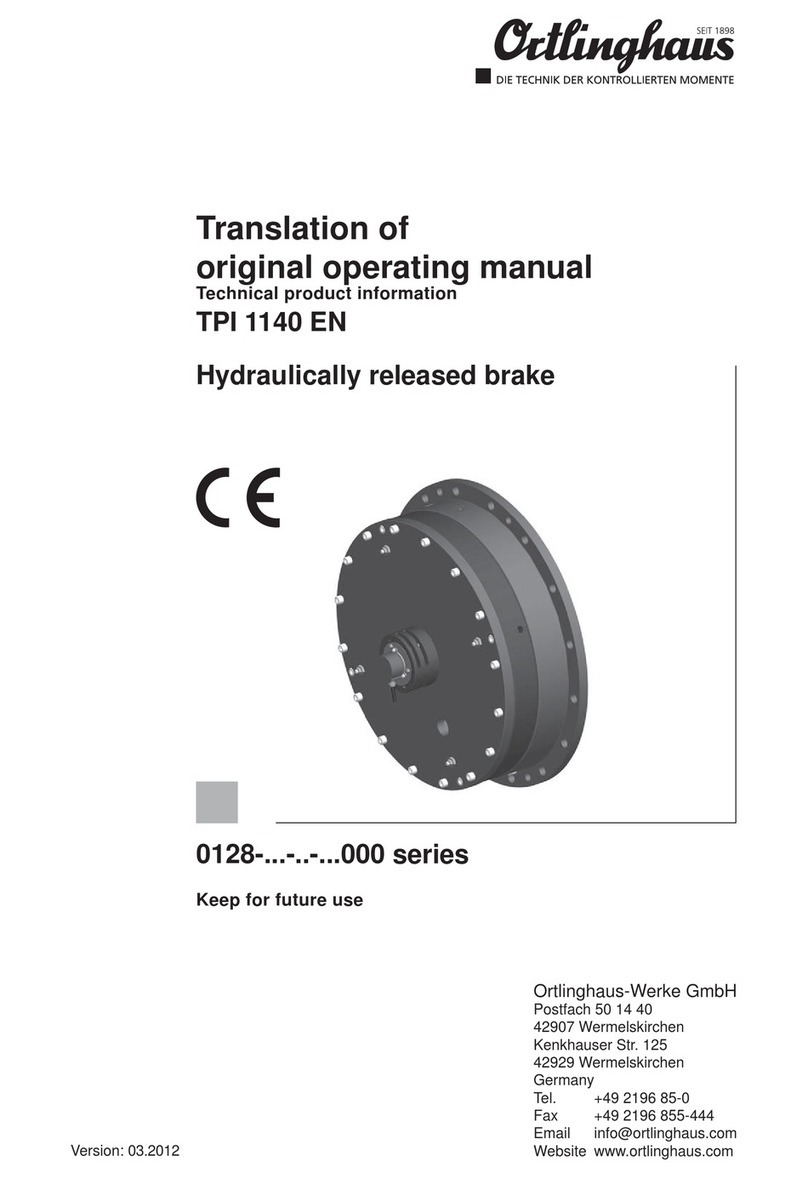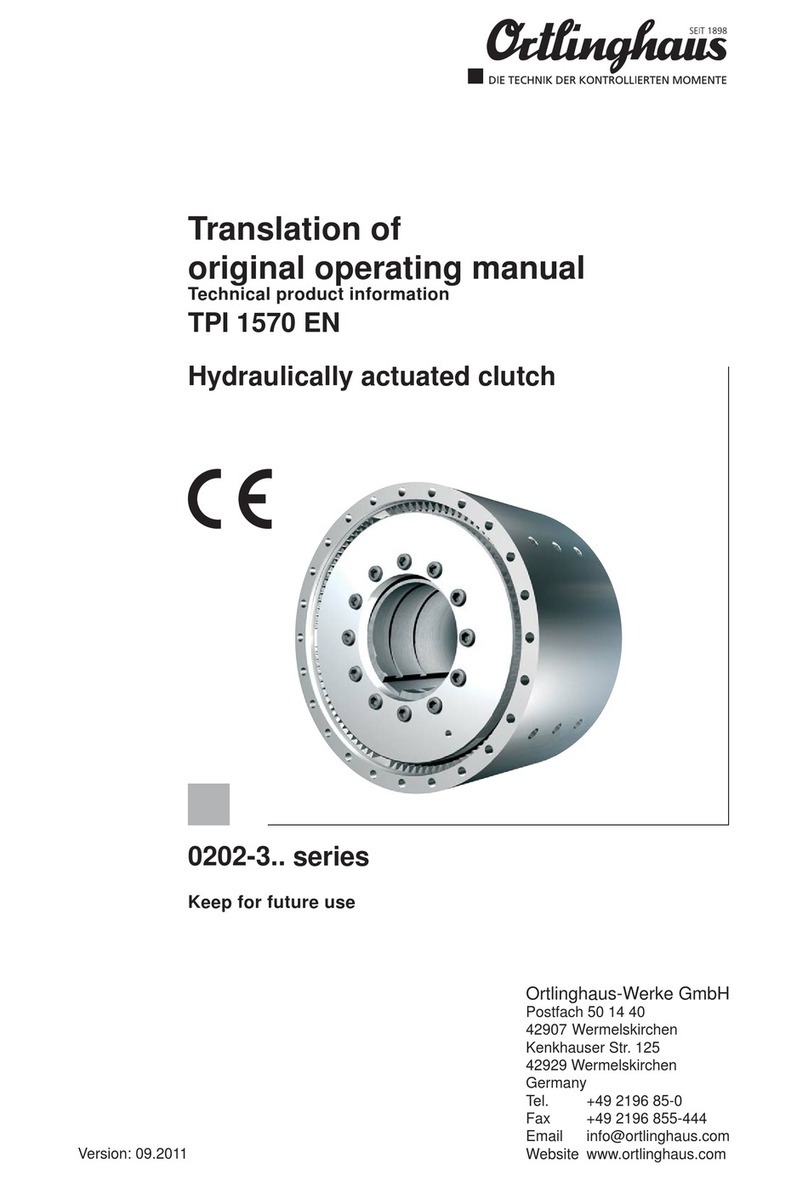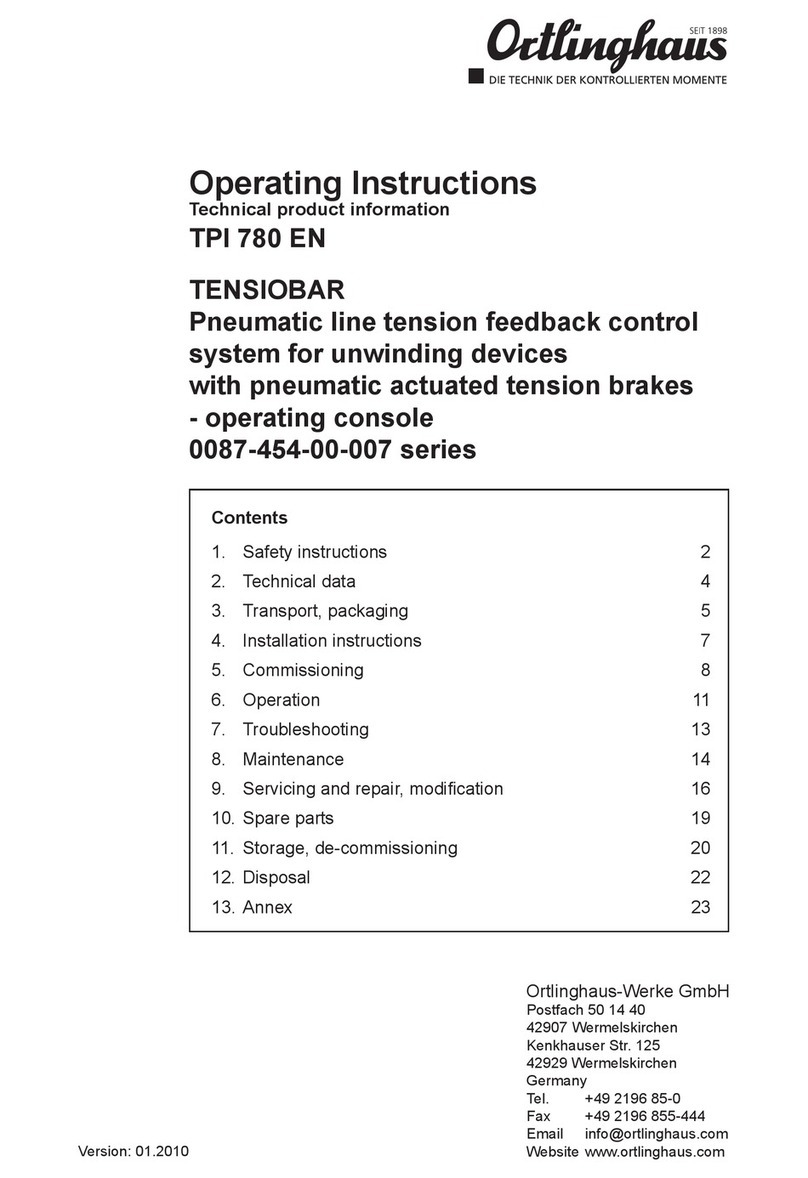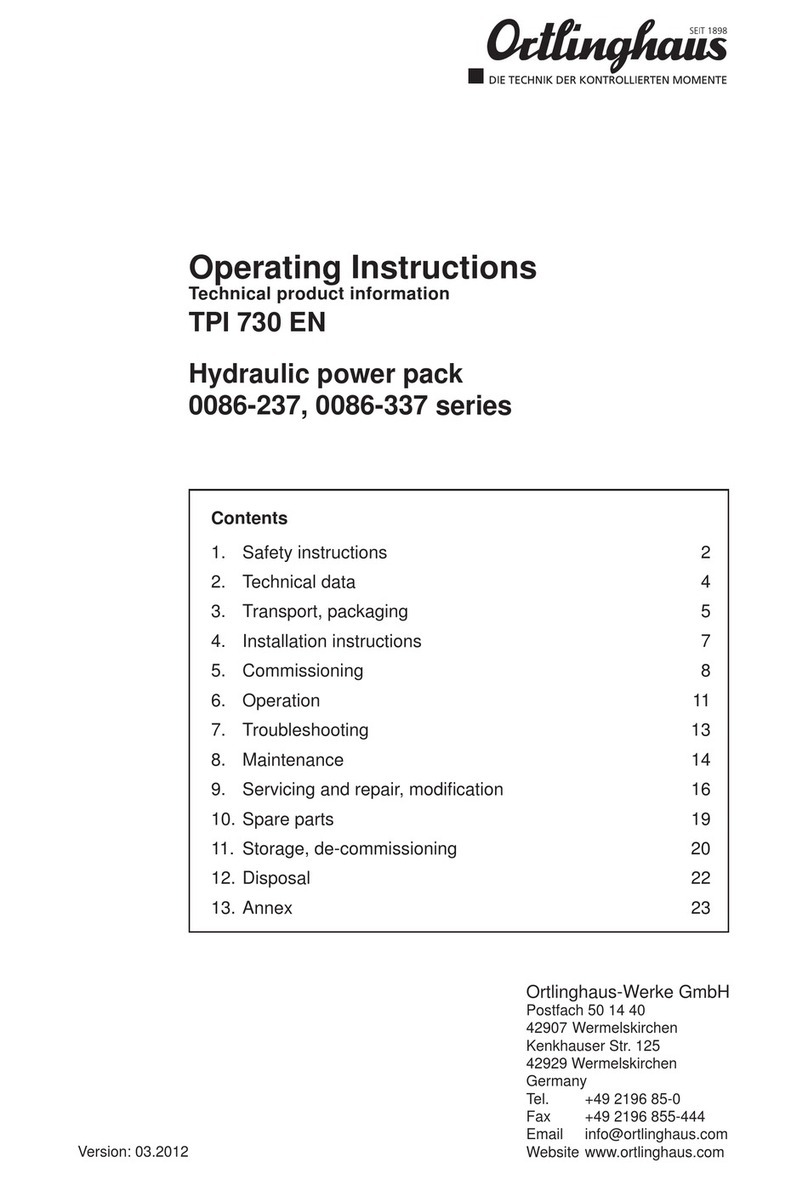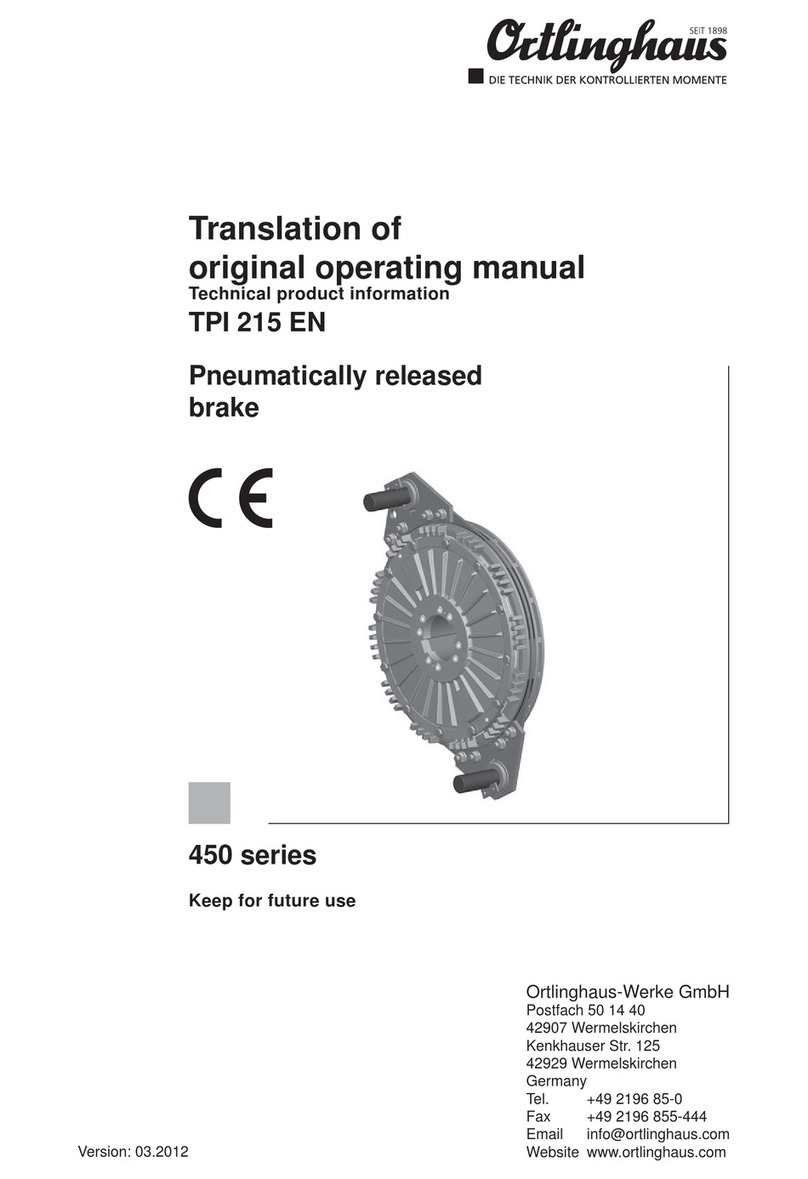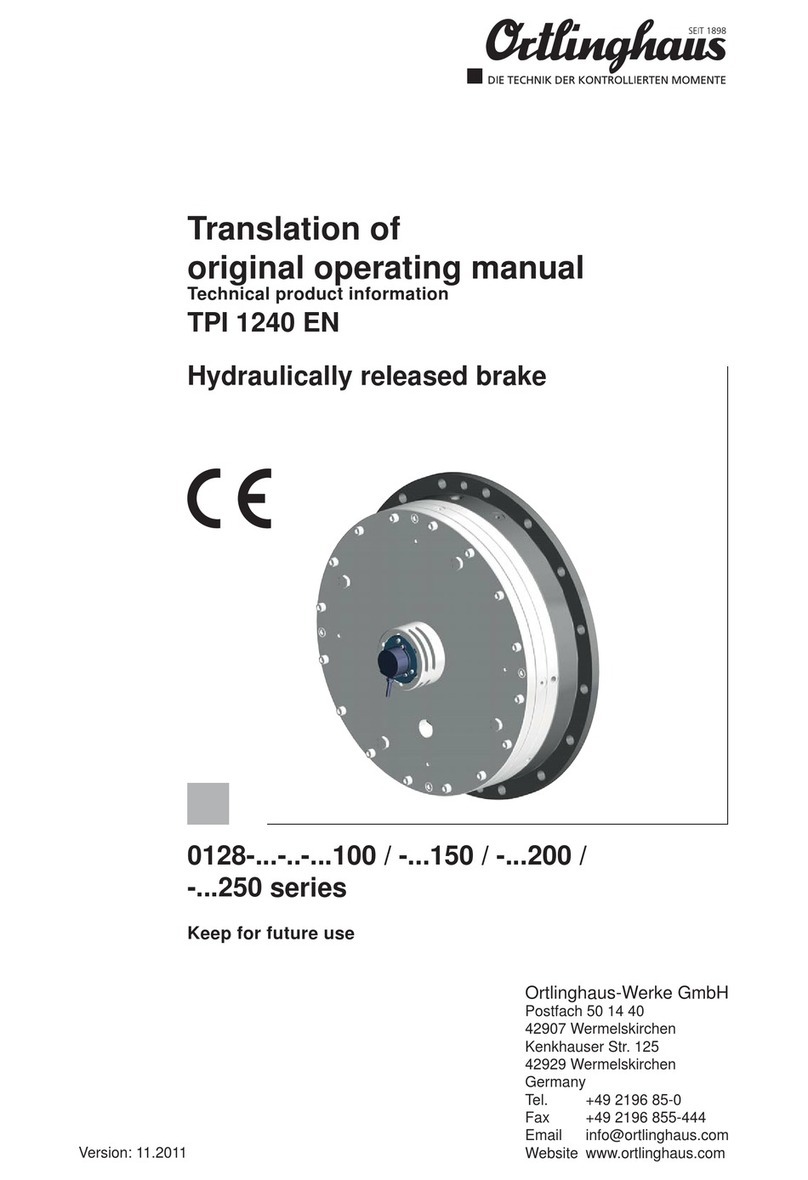
Ortlinghaus-Werke GmbH Operating instructions TPI 1340 EN
9
Hazard Cause Conse-
quences
Remedial actions, safety
information
Assembly/pressure system:
Inuencing of the effective-
ness of the clutch/brake due
to incorrect axial and radial
installation position and
locking of inner drive/shaft to
outer the drive, insufcient
pressure at the piston
Machine move-
ment
Running over,
sliding away,
crushing
Check installation position in accordance
with drawing, secure inner drive in axial
direction, check for freedom of move-
ment and correct positioning of parts prior
to commissioning, observe and monitor
minimum necessary operating pressure/air
pressure and monitor piston end position if
necessary (e.g. by means of microswitch,
incorporation into machine control)
Reaching into moving or
rotating parts whilst the clutch/
brake is open, with switching
operation, high rotational
speed
Moving parts Crushing,
catching
Cover up openings to clutch/brake
Rotating parts
Thermal hazards:
Dynamic switching processes,
high speeds, oil level in the
clutch/brake too high (wet
running)
Objects or mate-
rials with high/low
temperature
Burning Operator instructions, clearance grill or
temperature sensor, observe oil ll quantity/
coolant oil ow, monitor speeds
Noise hazards:
Contact with parts under the
inuence of speed, incorrect
installation position (radial/
axial) and locking of inner
drive/shaft to outer drive,
operating pressure/air pres-
sure too low or missing, incor-
rectly aligned parts
Moving parts Discomfort, stress Check the fastening of the clutch/brake and
the inner drive, check installation position in
accordance with drawing, check for freedom
of movement of the clutch/brake, observe
and monitor minimum necessary operating
pressure/air pressure and monitor piston
end position if necessary
Dynamic clutch/brake proc-
esses
Friction surfaces Discomfort, stress None
Radial misalignment between
inner drive and outer drive
Out-of-balance
rotating parts
Discomfort, stress Check the fastening of the clutch/brake and
the inner drive, check installation position in
accordance with drawing, check for freedom
of movement of the clutch/brake
Oscillation hazards:
High rotational speeds Misalignment of
moving parts
Discomfort, stress Check the fastening of the clutch/brake and
the inner drive, check installation position in
accordance with drawing, check for freedom
of movement of the clutch/brake, comply
with speed limit and monitor if necessary
Material/substance hazards:
Leaks:
Operation with leaking clutch/
brake (wet running), with
assembly/disassembly of the
pressurised oil connections
Aerosol, uid,
vapour
Respiratory prob-
lems, allergisation
Clutch/brake leaking externally, apply liquid
sealant to all clutch/brake joints and the
connection parts, check leak-tightness prior
to commissioning or at appropriate intervals
during operation
Operation with non-sealed
clutch/brake (dry running)
Dust Allergisation None
Ergonomic hazards:
Straining, posture Fatigue, muscu-
loskeletal aggra-
vation
Note weight information, use transportation
devices, perform work in upright position
